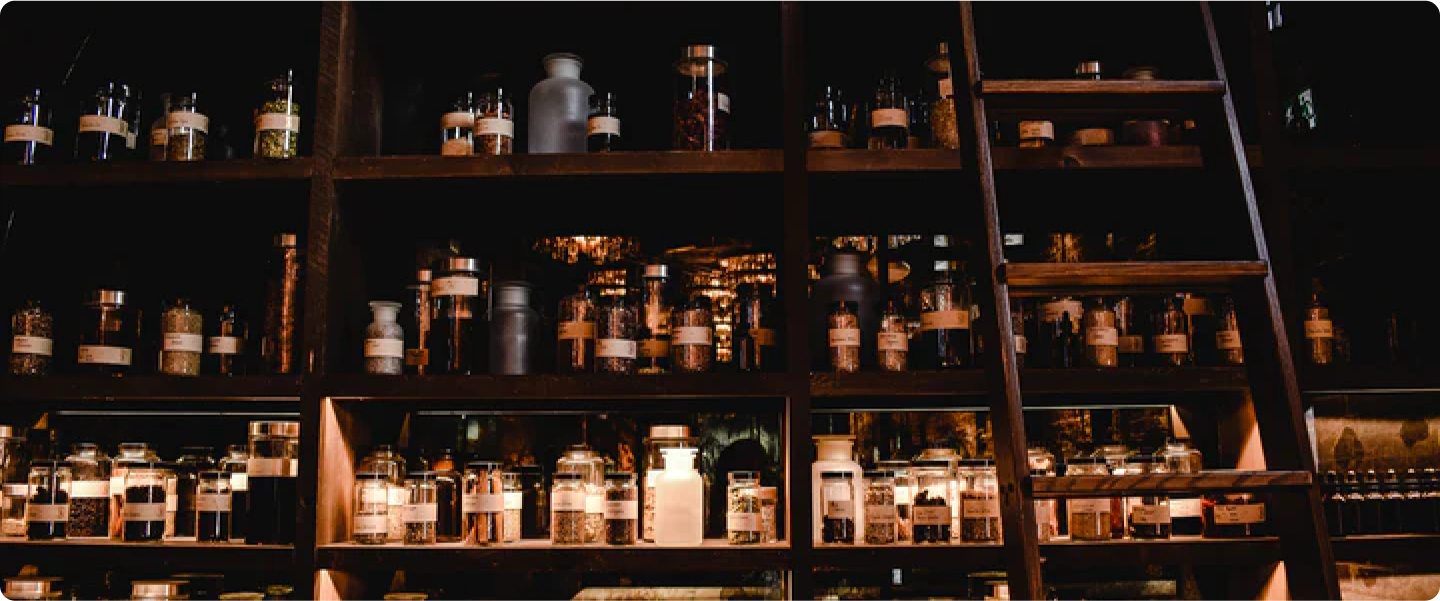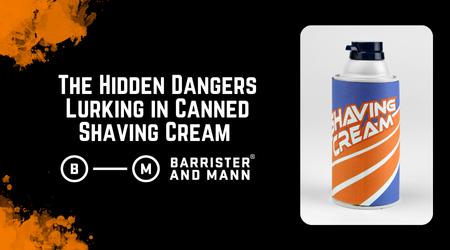Note: This article originally appeared on our sister site, Berceuse Parfum, and is republished here in its entirety because it's an important topic and something that should be discussed.
There are all kinds of fragrances. Candles, air fresheners, laundry detergents, shampoos, aromatherapy diffusers and more all suffuse our daily lives, perfuming the air wherever we go. Perfumes are everywhere too. On the lady that you sit next to on the bus, on the guy who rides with you in the elevator. We love fragrance, as a rule. We love to perfume the spaces around us to make them more comforting, more welcoming, more ours.
In addition to fragrances that we apply to ourselves and our possessions, there are also the scents of the world going about its business. The smell of hot coffee in the morning. Of baking bread or roasting meat as you walk down the street. That comforting winter soup that your mom would have on the stove when you got home from school. All of these aromas invite and entice us, making the world more fun, our existence more special. And all of these aromas are made up of chemicals.
“Chemicals.” It’s a scary word that conjures visions of toxic waste being dumped into rivers, of open vats of glowing green stuff, of big clouds of smog and soot being blown into the air. But chemicals make up the world around us. Everything is made of chemicals. Even you.

There’s been a trend in recent years to indict perfumery because it supposedly exposes us to “toxic chemicals.” Here’s the truth: while some of the ingredients that you find in perfume can be bad for you, it’s all a matter of quantity. A gallon is not the same as an ounce, which is not the same as a milliliter. All chemicals can cause harm, but there’s a lot of truth to the old axiom “the dose makes the poison.” If you drink a bottle of cold water on a hot day, you’ll feel great. If you drink 50, you'll probably die. Too much of anything is a problem. But small amounts of this and that, little touches here and there, contribute to some of the best parts of our lives.
Take cloves, for instance. No, not garlic, though that’s made of chemicals too. I’m talking about the spice that you see on store shelves and that your mom uses in pumpkin or apple pie. The smell and taste of cloves comes from a chemical called eugenol. In fact, up to 80% of the clove experience is a direct result of eugenol and its clove-y aroma and flavor1. Clove is often used in baked goods as part of spice blends and can even be found in your pumpkin spice latté or muffin. But eugenol is present in many other foods as well. A short list includes:
- Apples
- Buckwheat
- Celery
- Cinnamon
- Cocoa
- Coffee
- Ginger
- Honey
- Mushrooms
- Nutmeg
- Oregano
- Plums
- Rosemary
- Strawberries
- Tomatoes
- Turmeric
- Vanilla2
Eugenol is also common in fragrances, either in the form of clove oil or as a pure, refined product3. It imparts a spicy, somewhat floral note, and is a major component in rose, carnation, and cinnamon fragrances because rose oil4, carnation oil5, and cinnamon oil6 all contain eugenol naturally. It also crops up in a variety of other fragrance notes and is generally considered to be one of the most widely used and versatile perfume ingredients.

Eating eugenol or wearing perfumes that contain it is perfectly safe in every day use. But too much eugenol can be bad for you, and, despite what you might read, the perfume and flavor industries have no intention of poisoning us with too much of this or that. They don’t want the lawsuits. It’s very easy to prove that eugenol or some other material is present in a fragrance through chemical analysis, and you can even show how much of it each bottle contains. If you have a reaction to one of these fragrances, and if that number is significantly above the standards prescribed by the IFRA (more on them in a minute), it’s not out of the question that you could sue a perfume manufacturer and win. Even if you don’t, a reputation for products that cause chemical burns is bad for business, so most fragrance houses are pretty careful to stick to the rules.
The International Fragrance Association, known by its trade abbreviation “IFRA,” is the industry watchdog responsible for setting usage standards for all sorts of materials, from essential oils to manufactured chemicals. They’re the ones who tell perfumers how much of a given fragrance ingredient is too much. Every so often, they update and publish a full technical document called the “IFRA Code of Practice." This document lays out the guidelines for every known fragrance/flavor material and ingredient, how much you can use—depending on what kind of product it is—and what the overall health risks for each substance are like.
Eugenol, for instance, is capped at 2.5% of a finished perfume. That might sound like a lot, but, as I mentioned, the flavor of cloves is about 80% or more eugenol, while certain types of basil are as much as 7.9%. If you’ve sprinkled fresh basil on your pasta recently, you’ve almost certainly taken in more of the material than you would from spraying on your favorite fragrance. In fact, if you assume that the average fragrance bottle size is 50 ml, 2.5% of that comes to about 1.25 ml per bottle, or 1/24th of an ounce, at most. And, if you expect to get 735 sprays per 50 ml bottle on average7, that works out to be 0.001 ml, or 0.000056 oz (or fifty six millionths of an ounce) per spray. Not much at all.
Despite this, exposure to large amounts of eugenol does have health risks. The compound exhibits organ toxicity in mice at levels of about 500mg per kilogram of body weight8. That means that, for a 220 lb person, eating about 50 g of eugenol, roughly an ounce and a half or so, will make you very sick and possibly kill you. But it would take a lot to eat that much.
Remember the Cinnamon Challenge9? People were videotaping themselves swallowing a big spoonful of cinnamon, without any water, in less than 60 seconds. Super dangerous, but not because of the eugenol in the cinnamon. Instead, the Cinnamon Challenge can (and will) make you sick, or even kill you, because of other compounds in the cinnamon, or because inhaling an entire tablespoon of finely ground spice can coat and burn your lungs. It’s something that, thankfully, most people will never do, at least not voluntarily.

But let’s consider, just for a moment, how much eugenol would actually be involved if you were silly enough to give this a shot. Cinnamon essential oil is about 0.03% eugenol10, and most cinnamon powder is between 0.9% and 7% essential oil11. Because a tablespoon is about 15 grams, if we estimate the essential oil content at the midway point (about 3.14%), that means that, of a tablespoon, .471 grams are essential oil. Of that, only 0.0001413 grams are eugenol, well below the 50 gram toxic dose. You’d have to eat 353,857 grams of ground cinnamon, which is about 23,590 tablespoons, or just about 769 pounds.
The point here is not to talk about how much cinnamon or cloves you should or shouldn’t eat. The point is, instead, to say that, while there are certainly health risks to exposure or ingestion of large quantities of perfume ingredients, most of us will never encounter even close to that much of any of them within our lifetimes. Don’t let fear hold you back from enjoying the art of food, or from making your space as comfortable as possible.
| 1Surburg, H., & Panten, J. (2006). Common fragrance and flavor materials: preparation, properties and uses (5th ed.). Weinheim: Wiley-VCH. |
| 2Api, A.m., et al. “RIFM Fragrance Ingredient Safety Assessment, Eugenol, CAS Registry Number 97-53-0.” Food and Chemical Toxicology, vol. 97, 17 Dec. 2015, p. S28., doi:10.1016/j.fct.2015.12.013. |
| 3Bedoukian, P. Z. (1987). Perfumery and flavoring synthetics (3rd ed.). Wheaton, IL: Allured. |
| 4The Good Scents Company - Typical G.C. analysis Catalog information. (n.d.). Retrieved February 2, 2020, from http://www.thegoodscentscompany.com/gca/gc1024951.html |
| 5The Good Scents Company - Typical G.C. analysis Catalog information. (n.d.). Retrieved February 2, 2020, from http://www.thegoodscentscompany.com/gca/gc1014511.html |
| 6The Good Scents Company - Typical G.C. Analysis Catalog Information. (n.d.). Retrieved February 2, 2020, from http://www.thegoodscentscompany.com/gca/gc1022811.html |
| 7S, Kevin. “About.” Now Smell This, 19 Aug. 2008, nstperfume.com/2008/08/19/perfume-for-life-how-long-will-your-fragrance-collection-last/. |
| 8Api, A. L., Belsito, D. L., Bhatia, S. L., Bruze, M. L., Calow, P. L., Dagli, M. L., … Wilcox, D. L. (2015). RIFM fragrance ingredient safety assessment, Eugenol, CAS Registry Number 97-53-0. Food and Chemical Toxicology, 97, S28. doi: 10.1016/j.fct.2015.12.013 |
| 9“Cinnamon Challenge.” Wikipedia, Wikimedia Foundation, 26 Dec. 2019, en.wikipedia.org/wiki/Cinnamon_challenge. |
| 10IFRA (2020). 49th Amendment to the standards library. Geneva, Switzerland: IFRA. |
| 11Raghavan, S. (2007). Handbook of spices, seasonings, and flavorings (2nd ed.). Boca Raton, FL: CRC Press. |



Comments
David, right you are! My apologies, I apparently divided in the wrong direction, and the math has now been repaired. Still about 769 lbs of cinnamon powder, so definitely don’t attempt to eat that much. There are quite a few things in cinnamon powder that will kill you long before you get to a lethal dose of eugenol!
You might want to check the tablespoons to grams to pounds math again. There’s more than 2.2 grams in a pound
My favorite fragrances all contain euganol. It works great with my skin. I hope I can continue to find my favorite fragrances in the original recipes for many years to come.